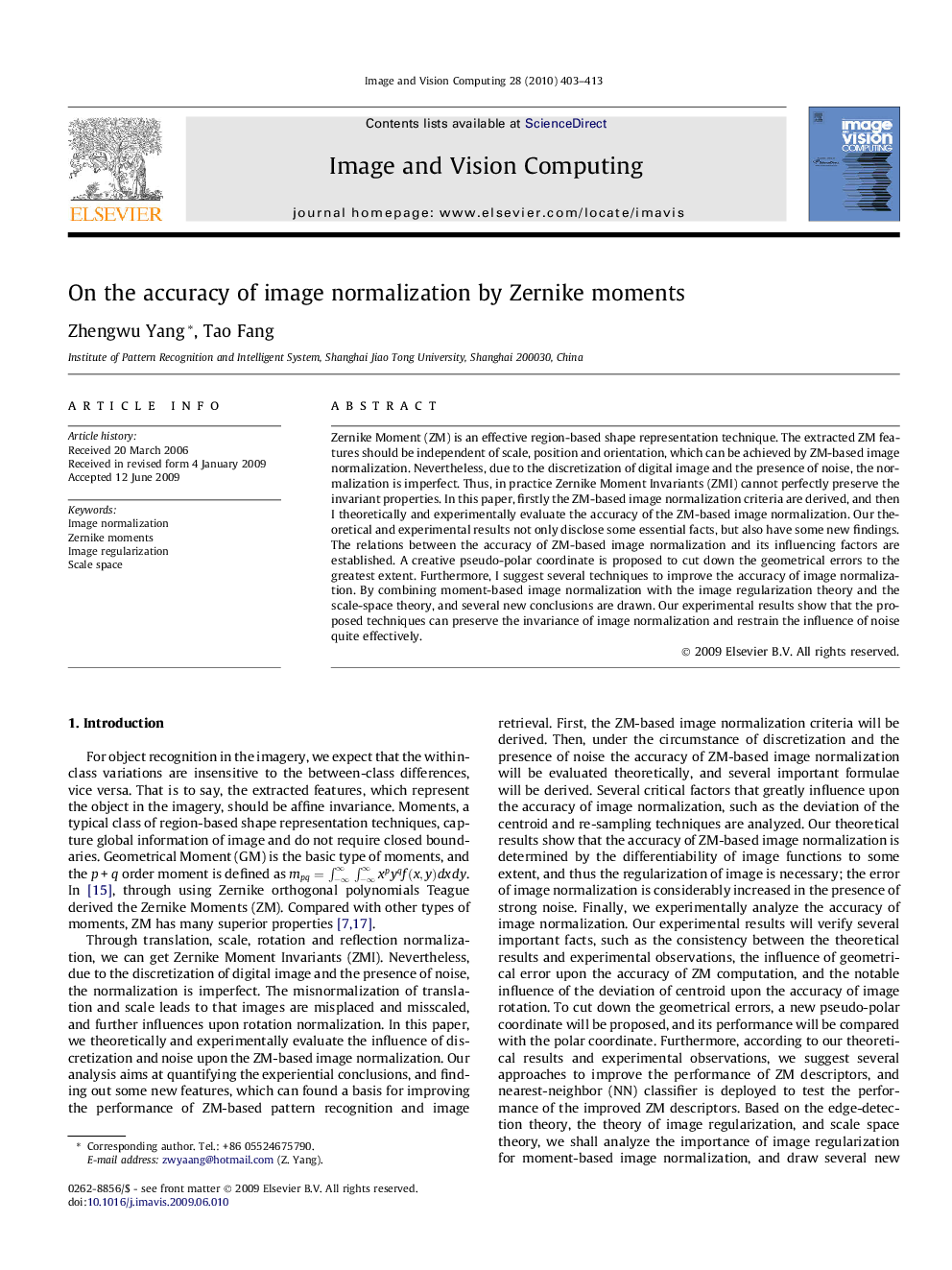| Article ID | Journal | Published Year | Pages | File Type |
|---|---|---|---|---|
| 527388 | Image and Vision Computing | 2010 | 11 Pages |
Zernike Moment (ZM) is an effective region-based shape representation technique. The extracted ZM features should be independent of scale, position and orientation, which can be achieved by ZM-based image normalization. Nevertheless, due to the discretization of digital image and the presence of noise, the normalization is imperfect. Thus, in practice Zernike Moment Invariants (ZMI) cannot perfectly preserve the invariant properties. In this paper, firstly the ZM-based image normalization criteria are derived, and then I theoretically and experimentally evaluate the accuracy of the ZM-based image normalization. Our theoretical and experimental results not only disclose some essential facts, but also have some new findings. The relations between the accuracy of ZM-based image normalization and its influencing factors are established. A creative pseudo-polar coordinate is proposed to cut down the geometrical errors to the greatest extent. Furthermore, I suggest several techniques to improve the accuracy of image normalization. By combining moment-based image normalization with the image regularization theory and the scale-space theory, and several new conclusions are drawn. Our experimental results show that the proposed techniques can preserve the invariance of image normalization and restrain the influence of noise quite effectively.
